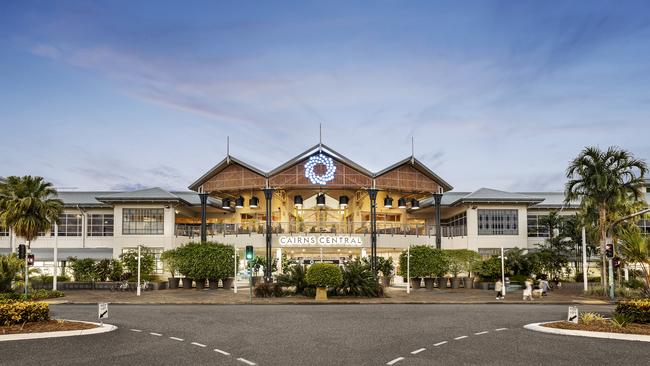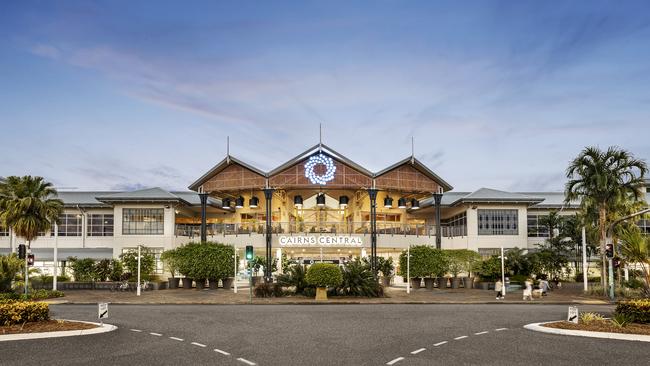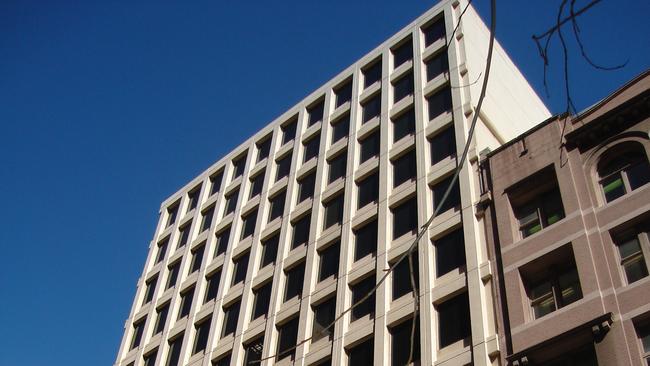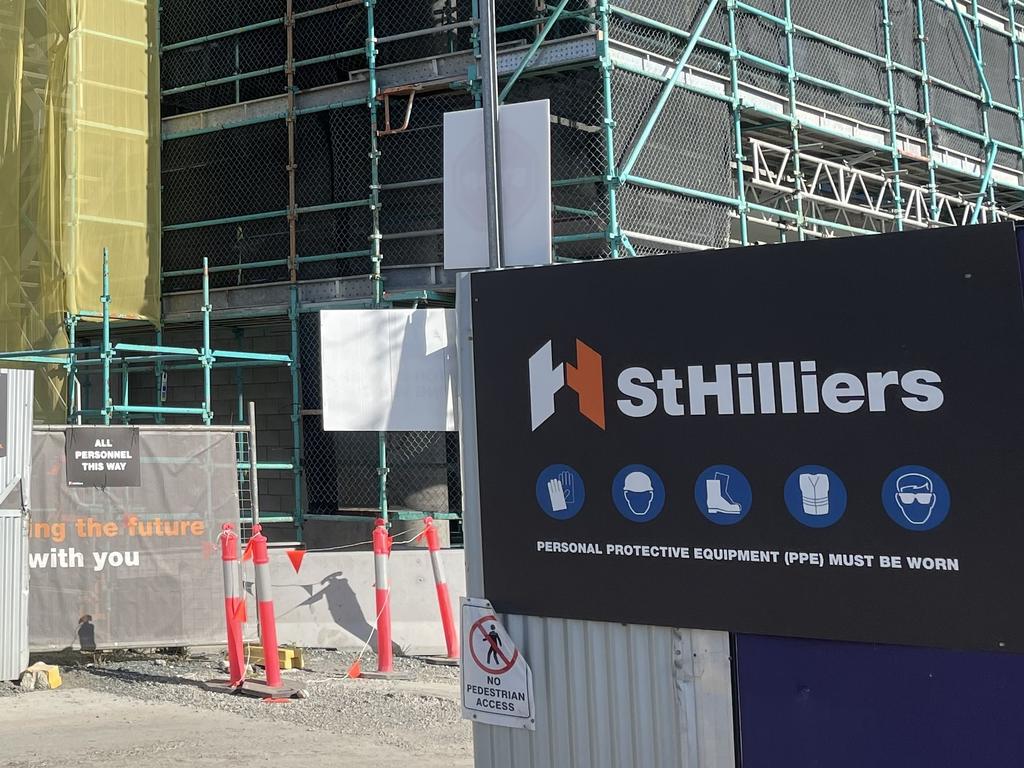Bounce back: property deal-making to get back on track
This year is set to be better for commercial real estate than the quiet 2023 but vendors may need to cut back expectations.

The commercial property market is expected to emerge from one of its toughest periods this year but a full recovery in volumes could be slow as big-ticket sales remain drawn out and local and global conditions remain volatile.
Investors are hoping that borrowing costs will stabilise or even fall as bond markets bet that an interest rate cut will likely come later this year after the Reserve Bank held this week, enabling deal-making to resume after a year marked by low volumes.
They believe the steady performance of shopping centres in a slow economy, as well as demand seen for premium offices, and overall strength of industrial assets, as well as the emergence of new asset classes like build-to-rent and data centres, bode well.
But global concerns about a commercial real estate debt crisis and the continuing woes of local builders and developers are driving some caution.
Agents have also warned the gap between buyers and sellers that stalled activity last year is yet to be fully bridged, with transactions taking longer than expected in a market lacking in depth.
But deals are getting done with Forza Capital tying up a purchase of a block in Sydney’s Clarence St that is being sold by an Investa fund for about $130m.
Activity is expected to be buoyed as major landlords and fund managers must still offload assets to slash debt and meet redemption requests, creating a pool of assets that must be shifted.
Shopping centre markets have already undergone a big reset with a run of deals showing private buyers and syndicators will snap up assets that show good value.

But office buildings are still trading at a slower pace, even as new stock hits the market, amid concerns about weak leasing conditions and global fears about the asset class still holding some big deals back.
Real estate agencies believe there will be a recovery both in demand for real estate and also for those looking to sell sought after assets, especially in hot areas like non-discretionary retail, build-to-rent and healthcare.
CBRE head of research, Pacific and ESG Asia, Sameer Chopra, is expecting mid-single digit income growth and flat or modestly higher capital values by the end of 2024.
“We don’t expect to see a respite from last year’s ‘rent-a-demic’ in the industrial and residential sectors as vacancy remains tight and future supply could be further challenged by elevated construction costs,” he said.
“Meanwhile, falling bond yields should reduce some of the price anxiety around transactions, which should start to recover this year before a resurgence in 2025.”
This should help underpin a forecast 3 per cent increase in Australian investment volumes in 2024 to about $20bn, followed by a 37 per cent increase to $28bn in 2025 as office sales start to rebound.
“This is still just half of 2017-2019 levels, which we would view as “normalised years”, so there is significant upside to our forecasts if interest rate market movements are more favourable,” Mr Chopra said.
Growth areas, including industrial and residential, are tipped as early beneficiaries of rising transaction volumes, as interest rates begin to fall. With gearing across the industry below 30 per cent, CBRE expects that forced selling is unlikely with vendors more likely to need funds for their developments and to remix portfolios.
In the expanding living sector, it is tipping a “triple boost”, with demand for housing expected to benefit from rising population, rising employment and rising incomes. This growth is expected to translate into incremental demand for 475,000 homes, 5.2 million square metres of industrial space, 2 million square metres of office space, 1.1 million square metres of retail space and 13,500 hotel rooms between 2023 and 2025.
The agency expects Australian cap rates will expand by another 25 to 50 basis points in the first quarter and by up to 100 basis points over the course of the year. But it says this will flatline later this year and values will be backed by rental growth.
“Collectively this wealth effect will add circa $860bn of income over the next decade, a significant proportion of which is likely to be directed towards housing and living,” Mr Chopra said, noting that Australia was expected to have one of the highest growth rates globally.
Trough to peak expansion of cap rates is forecast to be about 200 basis points for prime industrial, 150-200 basis points for prime office, about 75-100 basis points for retail and about 30-50 basis points for the living sectors.
CBRE said that on the leasing front, premium office and retail assets will be one area to watch with a further tightening in vacancy rates forecast. It said the return to office will gather pace after reaching 71 per cent of 2019 levels in 2023, well above the 54 per cent recorded in the prior period.
Even higher visitation was recorded on peak days and in 2024 CBRE expects peak day visitation will get close to pre-pandemic levels, while also retaining flexibility.
Micro-precincts in inner city locations will be a key area of opportunity, as these locations benefit from workers returning to the office, an increasing number of international students and consumers craving ‘buzz’.
There will also be significant opportunities to co-invest in emerging precincts defined by infrastructure investment in metro-style rail, healthcare and technology hubs.
There is plenty of scope for a boost on last year’s low volumes. Investment in commercial property in 2023 fell to $17.3bn – the lowest since 2011 when the market was emerging from the effects of the GFC, according to real estate agency JLL.
The firm’s head of capital markets, Australia and New Zealand, Luke Billiau, is optimistic markets will stabilise.
“The post-pandemic exuberance of 2021 fuelled by the cheap cost of capital curtailed in 2022 and further in 2023, as a bid-ask gap emerged as a result of cautious investor sentiment and market uncertainty,” he said.
He said the prospect of a recalibration of asset values should see increased levels of activity in 2024-2025 as investors regained conviction.
He predicted that capital management would be a key focus for owner and some would seek capital partnerships.
“It’s clear from our discussions with offshore capital in particular that the focus on Australia will increase this year, which will present an opportunity for managers and investors. This said, return hurdles will be reflective of global relativity, but we expect this to settle as the valuation cycles continue and cash flow growth becomes more apparent,” he said.
JLL said Queensland was hardest hit last year with commercial turnover down 59 per cent on 2022, while NSW was off by 39 per cent, and Victoria dipped by 29 per cent.
The office market was hit by a 63 per cent drop in turnover last year, industrial weakened by 30 per cent and retail dropped just 6 per cent, after a strong finish to the year. Cairns Central traded and Ashfield Mall also sold.
The office turnover has been the lowest since 2009 and the weakest for retail since 2011, while industrial has maintained its momentum.
Mr Billiau said that 2023 was challenging for investors due to the volatility experienced in risk-free rates, creating various uncertainties across sectors and markets.
“The industrial investment continues to defy predictions of a peak, and the latest research indicates there will continue to be a shortage of stock through 2024 that should be supportive of asset values,” he said.
Mr Billiau said the retail sector was emerging again, and the attractive yields have started drawing fresh investment.
“This was reflected in the comparatively lower fall in retail investment compared to office and industrial. We saw relatively healthy levels of activity in retail, especially towards the end of 2023 when a number of transactions occurred,” he said.
JLL head of capital markets research, Australia, Andrew Quillfeldt, said the outlook for short and long term rates was still setting the tone for investor sentiment and it continued to be volatile.
But the trajectory had changed since the end of last year, with financial markets now pricing in a decrease in the official cash rate in many major market.
“There is dry powder globally, and in the APAC region and Australia remains appealing in the global context,” he said.
Big office plays are certainly starting again, with Singaporean group Keppel poised to strike the year’s largest office deal by taking a half interest in a $700m-plus Sydney skyscraper from a Mirvac-run fund.
Colliers said office investors were waiting in the wings for Australia’s office values to reset as the nation lagged US and European markets where deeper cuts had been taken, although it is not expected to fall as deeply.
“Foreign investors recognise Australia’s market as a safe-haven and anticipated economic equilibrium will start to elevate sentiment this year,” Colliers head of office capital markets Adam Woodward said.

There is also further activity expected in industrial property.
“With an average national vacancy rate of one per cent, and 80 per cent of last year’s record annual national supply already committed, the supply and demand imbalance driving industrial income growth is a permanent structural shift for the foreseeable future,” Colliers head of industrial and logistics, capital markets, Gavin Bishop, said.
He said rents would preserve capital values and significantly offset yields, following a national weighted average prime yield softening of 70 basis points over 2023, compared to 80 basis points over 2022.
“Sydney CBD may be the first mover when investment activity begins to ramp up around June 2024, since underlying investor sentiment currently favours Australia’s largest office market, and the value of transaction volumes over 2023 proved most resilient compared to other locations,” he said.
Knight Frank expects that 2024 will be a better in which to acquire assets after two tumultuous years.
“The sustained pressure of higher rates has naturally put pressure on asset values and this is still playing out to varying degrees,” Knight Frank chief economist Ben Burston said.
“Buyers and sellers alike, helping to restore confidence and liquidity,” he said.
Mr Burston said that while lower asset values were never welcome, the flip side was the re-emergence of value looking forward.
“Higher yields act to reset the market and provide a more attractive entry point for investors, generating the prospect of higher returns.”
He said lower rates may return but they are unlikely to return to the lows of 2016 to 2021 and investors would need to plan for the new reality. And there is grounds for optimism in newer areas.
Cushman & Wakefield CRE managing director ANZ Guy Bennett called out rising interest in data centres and BTR properties as these sectors continue to move towards the mainstream.
“Although rapidly rising interest rates has led to a degree of caution among investors, we expect that a pivot by the RBA in the second half of 2024 will ease credit conditions and support a recovery in the investment market,” he said.
But office buildings are still trading at a slower pace, even as new stock hits the market, amid concerns about weak leasing conditions and global fears about the asset class still holding some big deals back.




To join the conversation, please log in. Don't have an account? Register
Join the conversation, you are commenting as Logout